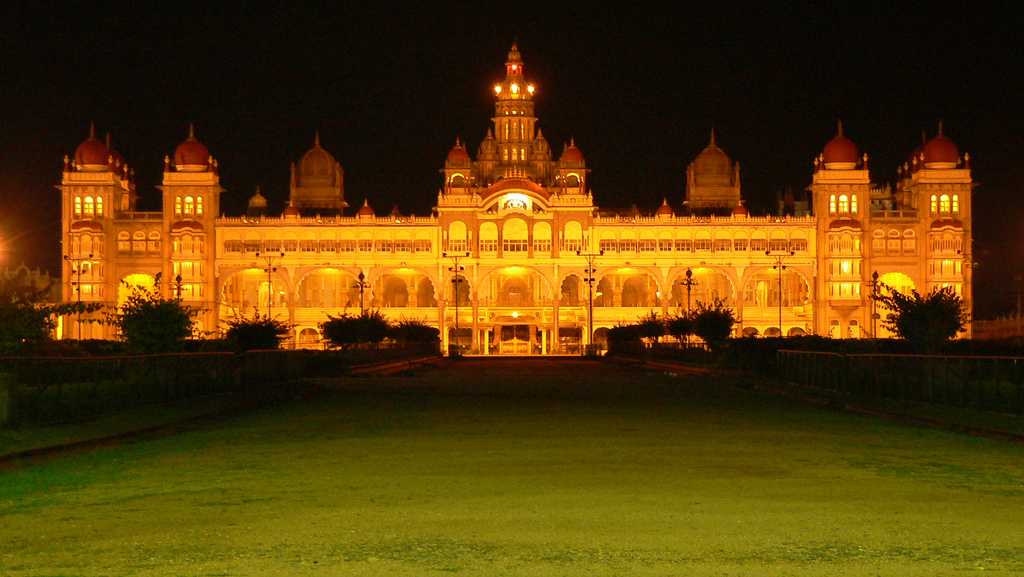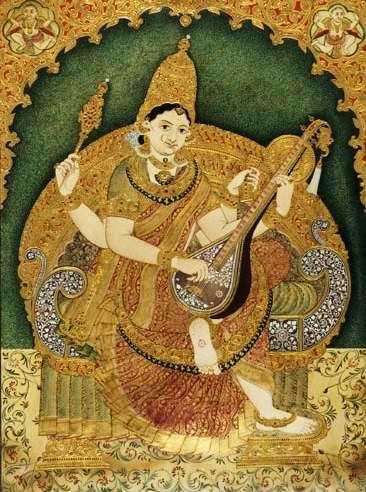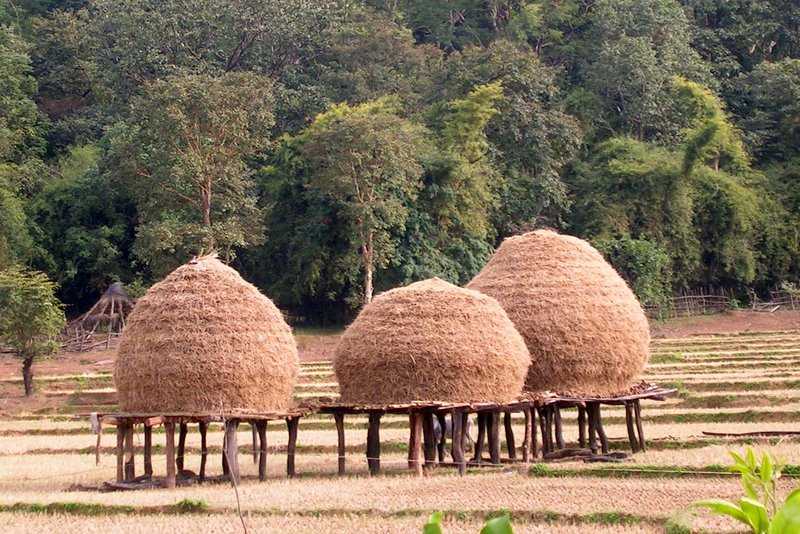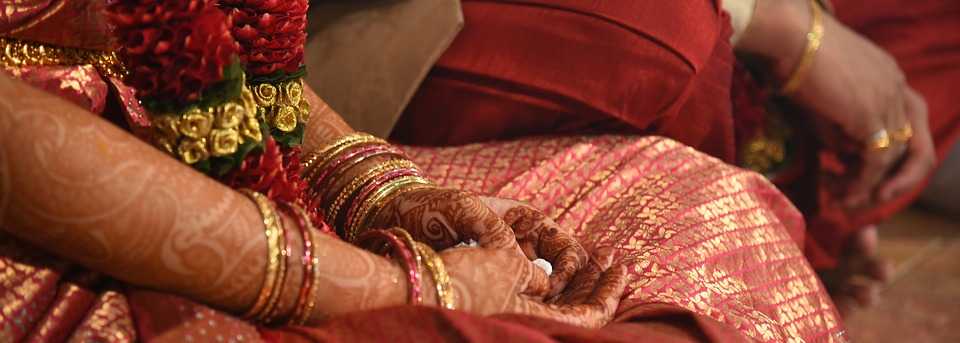Arts and traditions of karnataka.
Karnataka Culture - All About Tradition, Dress and Festivals of Karnataka

Art and Culture of Karnataka

Earlier, painting involved not only the act itself but the entire process, from making one's colours to watching as they come to life. Paper, wood, cloth, etc. were some of the materials artists used as a base for their paintings. Brushes weren't made from synthetic materials but were made from the original hair of animals like camels, goat, and squirrel. The Mysuru style of paintings usually are representations of legends, mythical scenes, and the royal family. This style of painting from Karnataka is known for its simplicity and intricate detailing across the country. The artists used a particular gesso paste, consisting of zinc oxide and gum, which formed a protective layer on the painting, which has kept them undamaged even after 150 years.
Heritage of Karnataka

Languages of Karnataka
The diversity of Karnataka isn't just in its art and history but also in religious and linguistic ethnicity. Combined with their long histories, the cultural heritage of the state lies in its language. The Kannadigas envelope most of the state that comprises 30 districts, while Karnataka is also home to Kodavas, Tuluvas, and Konkanis.
Kannada
Kannada is spoken as a native language by about 74% of the people of Karnataka. Kannadigas are the native speakers of Karnataka who form a dominant ethnic group. Being the administrative language of Karnataka, Kannada is considered as a classical language by the recommendations of linguistics experts and the government of India.
Tulu
The native speakers of Tulu called Tuluvas also form a dominant ethnic community of Karnataka. Tuluvas cover most of Dakshina Karnataka, Udupi, Kasargod of Kerala which is often termed as Tulu Nadu. The Tuluvas form 2.38% of the total population of Karnataka.
Kodava
Kodava language is probably one of the unheard languages of Karnataka with just 0.25% of native speakers. The Kodava people are settled in the Kodagu district of Karnataka. Apart from Kodavas, according to the Karnataka Kodava Sahitya Academy, there are 18 other ethnic groups who speak Kodava which includes Iri, Heggade, Banna, Koyava, Kembatti, Kudiya and Meda.
Urdu
The second-largest ethnic group with 9.72% of the total population with a majority of speakers from the Muslim community. Although the Urdu speakers are unevenly distributed in Karnataka, about 43.5 % are bilingual who prefer speaking Kannada rather than Urdu.
Beary or Byari
Beary or Byari is spoken by the Muslim communities of Dakshina Kannada and Udipi districts. This language has influences of Malayalam, Arabic and Kannada.
Music of Karnataka
The only state that flourishes with both Hindusthani music from North and Carnatic music from the south is Karnataka.
Hindusthani
The Hindustani musicians of Karnataka have won several awards like the Kalidas Sanman, Padma Vibhusan and Padma Bhusan. Hence, Karnataka has achieved a prominent place in Hindusthani Music. Basavaraj Rajguru, Puttaraj Gawai, Sawai Gandharva are some famous performers to name a few.
Carnatic
Purandara Dasa is one of the prominent composers in Karnataka who composed close to 75,000- 745,000 songs in Kannada and Sanskrit. Owing to his contribution, he is considered as the Father of Carnatic Music. He became a source of inspiration to composers like Tyagaraja. Purandaradasa later laid down a framework to impart the knowledge of Carnatic music.
Dances in Karnataka Culture

Siddi community's Dammami dance is also another traditional dance form. This dance form derives its name from an instrument Damam, made from leather. Initially, the dance was performed by Siddis post hunting to honour the tribal God Siddhinas. However, as the activity itself is banned, the dance is now performed once a year for the whole night. The performances are done in the Konkani language and depict a story, usually about the hunt or farming activities like ploughing, harvesting, etc
Festivals of Karnataka

The recent uproar over Tamil Nadu's bull-taming festival of Jallikattu has drawn attention to Karnataka's Buffalo race called Kambala. The annual buffalo race, a two-day festival, is an integral part of the rural community and is considered a sport as well as a tradition. Earlier, the rewards used to be coconuts, but these have been replaced by medals in recent times. The festival can be traced back over 800 years and is celebrated to please Lord Kadri Manjunatha, an incarnation of Lord Shiva. In the last few years, it has received a lot of backlash from organisations concerned about animal cruelty. However, the recent judgement by the Supreme Court has allowed the celebration of this annual festival.
The other main festivals of Karnataka are Ugadi, the Kannada new year, and Mysuru Dasara, or popularly known as Navratri, a ten-day festival in honour of the Hindu goddess Chamundeshwari which can be traced back to 15th century.
Occupation

Wedding Customs in Karnataka
Weddings in Karnataka follow customs similar to Traditional Hindu Weddings. The first ritual happens to be Nandi Puja followed by a fascinating ritual of Kashi Yatra takes place, where the groom pretends to go on a pilgrimage saying that the family doesn't find a bride for him. The groom is appeased by his uncle at the end of the Kashi Yatre and then Dev Karya takes place in front of Lord Ganesha ending the prewedding rituals.
Post-wedding games are the fun part of every wedding where the families and friend from both sides take part actively. After the celebrations and games are the most heart touching moments for the festivities when the bride has to say bye to her parents and tears rolling down the cheeks is a normal scenario in these moments. The bride is welcomed to the groom's house with the Griha Pravesha ritual calling an end to the ceremonies and marking the start of a happy life together.
Dressing Culture of Karnataka


Good work👏
ReplyDeleteInformative 👌
ReplyDeleteInformative!!
ReplyDeleteGood one
ReplyDeleteGood job 👍
ReplyDeleteGood job
ReplyDeleteGood one 👏
ReplyDelete👏👏
ReplyDeleteGood work👍
ReplyDeleteGood work
ReplyDeleteGreat👏
ReplyDeleteGood one👏👏
ReplyDelete👍🏼
ReplyDeleteGood job 👍
ReplyDeleteGood👍👍
ReplyDeleteGreat work
ReplyDeleteGood one👍
ReplyDeleteGood work
ReplyDeleteNice info😊
ReplyDelete👍
ReplyDeleteWell done 👍
ReplyDelete👏👏
ReplyDeleteWell done
ReplyDeleteGood
ReplyDelete👏👏
ReplyDeleteInformative
ReplyDeleteGood job
Continue it♡
Informative 👏
ReplyDeleteInnovative
ReplyDeleteGood job
Delete